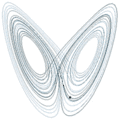Template:Selected anniversaries/February 6: Difference between revisions
No edit summary |
No edit summary |
||
| Line 27: | Line 27: | ||
||1879 – Carl Ramsauer, German physicist and author (d. 1955) | ||1879 – Carl Ramsauer, German physicist and author (d. 1955) | ||
||Sir Hugh Stott Taylor KBE FRS (b. 6 February 1890) was an English chemist primarily interested in catalysis. In 1925, in a landmark contribution to catalytic theory, Taylor suggested that a catalysed chemical reaction is not catalysed over the entire solid surface of the catalyst but only at certain 'active sites' or centres. He also developed important methods for procuring heavy water during World War II and pioneered the use of stable isotopes in studying chemical reactions. | |||
||1908 – Edward Lansdale, American general and CIA agent (d. 1987) | ||1908 – Edward Lansdale, American general and CIA agent (d. 1987) | ||
Revision as of 10:36, 29 November 2017
1582: Mathematician, astronomer, and philosopher Mario Bettinus born. He will write Apiaria Universae Philosophiae Mathematicae, an encyclopedic collection of mathematical curiosities.
1614: Mathematician, astronomer, philosopher, and priest Pierre Gassendi uses Gnomon algorithm techniques to investigate the possibility of certain knowledge.
1804: British scientist Joseph Priestley dies. He is historically credited with the discovery of oxygen, having isolated it in its gaseous state, but his determination to defend phlogiston theory and to reject what would become the chemical revolution left him isolated within the scientific community.
1958: Air Force and Navy personnel begin search for hydrogen bomb known as the Tybee Bomb, which was lost in an accident the day before.
1958: Woodward and Burroughs use Extract of Radium to predict location of the the Tybee Bomb.
1989: Lorenz system exposed to Extract of Radium, develops Wumpus-compass syndrome.





